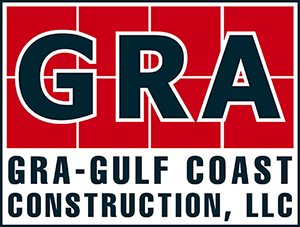When incorporating Houston LEED construction technology, a business may utilize insulating concrete forms (ICF) that feature two outer layers, and rebar. ICFs are forms for pouring concrete walls. With structural foam on both sides, these forms interlock and stack like LEGO® blocks. ICFs are able to withstand strong winds, prevent fires from spreading and to enhance the air quality of the structure’s interior.
The Building
ICFs contains a network of sizable sections that lock together, and unlike most structures, buildings with this system do not require mortar to hold the forms together. Generally, the inner layers of the walls have a width of four inches to 12 inches. The concrete may also be used to create roofs, and the system allows a rooftop to handle much more weight than a standard, commercial roof.
Energy Efficiency
According to numerous analyses, insulating concrete forms are able to reduce the costs of heating a building by 35 percent. During the summer months, the system prevents especially warm air from entering a structure’s interior by diverting the heat to the building’s foundation.
The Costs of Insurance
A recent study indicated that the monthly price of insuring a structure with insulating concrete forms is sometimes 50 percent less than the cost of insurance for a regular, commercial structure. Furthermore, some businesses will only insure buildings in areas that frequently experience hurricanes and tornadoes if the structures are built using ICFs.
Soundproof Concrete
In general; the system can reduce the level of noise that penetrates the walls by 35 percent. ICF is commonly added to apartment complexes to prevent sound waves from passing through the floors.
Withstanding an Earthquake
Due to the network of sections, the system will generally remain standing if one of the modules is damaged by seismic activity. When a section of concrete is completely removed, the wall will be held in place by the steel rebar.
Adding Wires and Pipes
By creating cavities in the foam for cables, electrical wiring and plumbing, contractors can place the wires and the pipes in these cavities.
The Concrete’s Strength
ICF with a thickness of six inches is generally stronger than a regular wall that has a thickness of eight inches. Standard concrete is commonly exposed to the outside elements for approximately 24 hours before it has fully hardened, and as a result, moisture can seep into a new wall. In contrast, the concrete in ICFs is encased in foam as soon as it is poured.
Stopping Insects
A recent analysis showed that most bugs enter small cracks in the mortar of older buildings, and some insects can eat through sealants that are added to these openings. Bugs are unable to enter structures with insulating concrete form because the outer layer will prevent cracks from forming under normal circumstances.
Air Quality and Environmental Protection
The system prevents toxic chemicals from entering the building. LCFs do not have any formaldehyde, which can seep into a structure’s interior from the walls. Moreover, a developer who specializes in Houston design build utilizing ICFs may save approximately 70 trees by using ICFs instead of wood and standard concrete construction.
Dealing With Moisture and Ice
Over time, small openings in mortar and old concrete will develop. After moisture has entered these cracks, the liquid may freeze, and the ice will generally expand. The foam that surrounds the walls will stop water and gas from penetrating the concrete.
Accumulating Points
LEED offers points for certain features, such as systems that improve energy efficiency. In order to be certified by LEED, a Houston industrial construction project must receive at least 40 points, and to obtain the highest award, the structure needs to qualify for 80 points. According to LEED requirements, insulating concrete forms can provide as many as 25 points.
